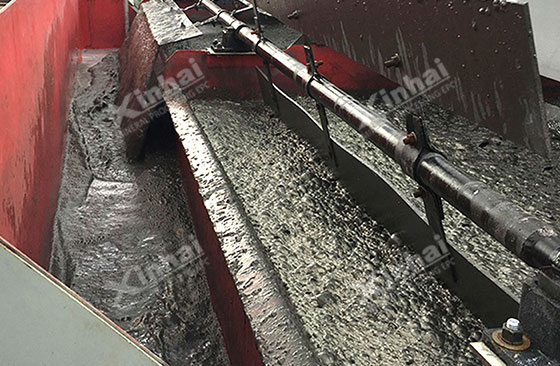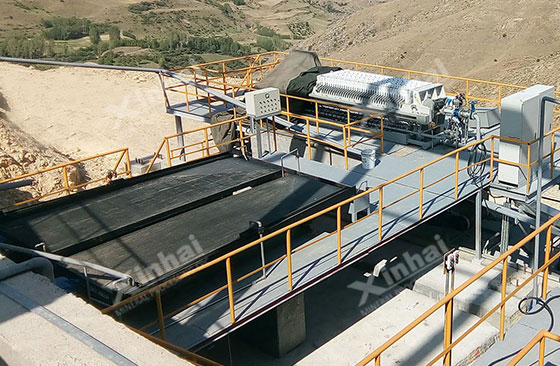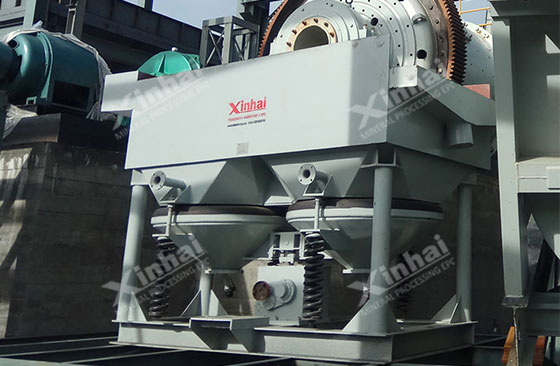
Manganese is a common metal mineral in nature, which appears in almost all kinds of ores and silicate ores. However, the useful manganese ores only a small part of them, including pyrolusite, psilomelane, bogs manganese etc. In the extraction of manganese, what kind of processing technology is applying for manganese? In this passage, we will introduce you to the extraction technology of manganese.
The manganese ores can be divided into five kinds ores: manganese oxide ore, carbonate manganese ore, Fe-Mn ore, ferromanganese ore, and polymetallic complex manganese ore. The extraction of these manganese ores is different. Next, we will introduce the extraction of manganese ores and their characteristics.

Manganese oxide is a big part of useful manganese ore. The lean manganese ores usually produce a lot of mud in grinding processes, which contents many manganese minerals. Therefore, manganese mud treatment is also an important part. According to the different manganese content amount and mineral disseminated grain size, the manganese oxide ores can be divided into massive disseminated rich manganese ore, small and granular disseminated manganese poor ore, fine granular disseminated manganese poor ore.
(1) Massive disseminated rich manganese ore
This kind of ore has a high amount of manganese content, the grain size is up to 40-75 micron. The simple mineral processing method can easily recovery high-grade manganese concentrates with screening or gravity separation. This extraction of manganese ore includes heavy medium dressing method, jig separation, concentrating table separation, etc.
(2) Small and granular disseminated manganese poor ore
This kind of ore has a low manganese content, which is usually under 30%. For this kind of ore, the manganese grain size is small and the mud content is large, so the extraction of manganese is complex. The manganese minerals are weakly magnetic, so this kind of ore is recovered by gravity-magnetic combined separation. The containing manganese mud is washed first. Then jig separation - strong magnetic separation - flotation combined separation is applied to recover the manganese minerals. The recovery rate is 42%~52%.
(3) Fine granular disseminated manganese poor ore
The manganese content amount in this kind of ore is usually under 15%, and the grain size is small and embedded evenly, which is hard to recover with single mechanical processing methods. The extraction of this kind of manganese is usually chemical leaching or chemical leaching and mechanical processing combined technology, such as gravity separation - leaching combined processing method, the recovery rate is about 60%.

The manganese in carbonate manganese ore mainly exists as manganese carbonate or silicate manganese, with fine grain size. Flotation is the main extraction of manganese under this condition. It still has problems such as the metal large amount of lost metal, and a large amount of agent consumption. Therefore, in production, we often use strong magnetic separation or gravity separation. The recovery rate ranges from 8% to 72%.
Fe-Mn ore is mainly recovering manganese. The manganese and iron content is over 30%. Compared with manganese oxide ores, the Fe-Mn ore is more difficult to separate, mainly because of the separation between iron and manganese. In production, washing - jig separation - roasting magnetic separation is used in recovering iron and manganese concentrates. The manganese concentrate is with manganese content 46.3% and iron content 5.4%. The recovery rate is about 75%.
The manganese content in this kind of ore is lower than other ores before, only 5%-10%. It also has the characteristics of fine disseminated extent, and iron-manganese minerals closed related. It is hard to recover by mechanical processing technology. Chemical leaching is the common way for this extraction of manganese. The ore recovering results are better than traditional mechanical processing technology.

Except manganese, polymetallic complex manganese ore also has some iron, lead, zinc, magnesium, copper, silver, and other metal minerals. They most exist as oxide ores. Among them, the manganese is closed related to iron, silver, and other minerals, which is hard to separate. According to this kind of ore, the extraction of manganese includes strong magnetic separation, gravity separation, flotation, and other technologies. Washing and screening are commonly used to separate the mud with manganese. Then the processing technology can differ from other recyclable minerals.
From the above, we can find that, because of the special characteristic of manganese, the mud is also an important part in the extraction of manganese. In the development of the mineral processing process, it is necessary to pay attention to the recovery of ore mud, in order to ensure that the recovery rate of manganese minerals can reach the expectation. We suggest that the mine owner seek the ore dressing equipment manufacturer with the qualification of ore dressing test design for consultation, and establish a reasonable and reliable process flow to guarantee the recovery benefit.
To find out more about our products and solutions, please fill out the form below and one of our experts will get back to you shortly.